Caring for your beloved dog extends beyond regular feeding and playtime; it encompasses comprehensive grooming to ensure their overall well-being. While bathing and brushing are common practices, one often overlooked yet crucial aspect is ear hygiene. Neglecting your dog’s ears can lead to discomfort, irritation, and even serious infections. That’s why selecting the Best Ear Solution For Dogs is paramount for maintaining healthy, clean ears. To guide you through this essential process, we’ve consulted with leading veterinarians to gather their expert insights on safe ear cleaning techniques and their top recommendations for effective ear solutions.
The Importance of Dog Ear Care: Why It’s Crucial
While cats are largely self-sufficient with their grooming, dogs require active human intervention for ear care. Dr. Danielle Bernal, on-staff veterinarian at Wellness Pet Company, emphasizes that while most cats don’t need ear cleaning unless there’s discharge or buildup, dogs absolutely do. Their ear anatomy, especially breeds with floppy ears, makes them more susceptible to accumulating dirt, wax, and moisture, creating a perfect breeding ground for bacteria and yeast. Regular cleaning with a suitable ear solution is your first line of defense against these issues, ensuring your canine companion stays happy and healthy. Ensuring their comfort includes providing a good environment, from their diet to their resting places. If you’re looking for quality products to enhance your dog’s daily life, consider exploring options for best online shopping for dogs.
How to Safely Clean Your Dog’s Ears: A Step-by-Step Guide
Cleaning your dog’s ears might seem daunting, but with the right approach and the best ear solution for dogs, it becomes a straightforward part of their routine. Follow these veterinarian-approved steps for a safe and effective cleaning experience:
- Get in Position: Gently lift your dog’s ear flap to expose the inner ear. This helps create a natural funnel for the solution to enter the ear canal effectively. Ensure your dog is calm and comfortable; a treat or a soothing voice can help.
- Use a Cleansing Solution: Carefully pour the ear solution directly into the ear canal. Use enough to adequately fill the canal. Remember to avoid inserting the tip of the bottle into the ear canal to prevent injury or contamination; simply squirt the solution in while holding the bottle slightly outside the ear opening.
- Massage Their Ears: After applying the ear wash, gently massage the base of your dog’s ear for about 20-30 seconds. This action helps distribute the solution throughout the canal and works to loosen any accumulated debris or wax.
- Allow Drainage: Let your dog shake its head. This natural action will help expel the excess solution and dislodged gunk from the ear canal. You might want to do this in an area where splashing won’t be an issue.
- Keep an Eye Out: Throughout the process, observe your dog for any signs of discomfort, pain, or unusual reactions. If you notice any irritation, excessive scratching, or whining, stop immediately and consult your veterinarian.
- Switch Ears: Once you’ve completed cleaning the first ear, repeat all the steps for the other ear.
An Important Warning: Never insert anything into your dog’s ear canal, such as cotton swabs or your fingers. These can push debris further in, potentially damage the delicate ear structures, or even rupture the eardrum. Dr. Chyrle Bonk, a veterinarian and contributor at Dogster, advises using a paper towel wrapped around your finger to gently wipe away any excess debris visible near the outside of the ear canal opening.
Determining the Right Frequency for Dog Ear Cleaning
The ideal frequency for cleaning your dog’s ears largely depends on the individual dog and their specific needs. As Dr. Bernal notes, “Every dog is different, and over-cleaning leads to irritation.” She encourages pet parents to regularly check their dog’s ears for dirt or debris and clean them only as needed, rather than sticking to a rigid schedule.
However, if you need a general guideline, Dr. Abel Gonzalez, a veterinarian and clinical director with Dutch.com, suggests that “once a month is adequate for most dogs.” He adds that dogs with floppy ears, those who swim frequently, or those prone to recurrent ear infections may require more frequent cleaning, sometimes weekly or bi-weekly, to maintain optimal ear health. Providing proper nutrition in appropriate serving vessels, such as puppy food and water bowls, is another way to support their overall health and reduce factors that might contribute to ear issues.
What Makes the Best Ear Solution for Dogs?
Choosing the best ear solution for dogs involves considering several key factors to ensure safety and effectiveness. Our veterinary experts emphasize these criteria:
- Specifically Formulated for Dogs: This is non-negotiable. Human ear-cleaning solutions are often too harsh and can irritate or even harm a dog’s sensitive ear canal. Always use products explicitly designed for canine use.
- Easy to Apply: Dogs can be squirmy during grooming. The best ear solutions come in bottles with pointed tips, making it easy to accurately squirt the liquid into the ear canal without unnecessary struggle, enhancing both safety and user experience.
- Veterinarian Recommended: Solutions endorsed by veterinarians offer peace of mind, knowing they are proven safe and effective. If you’re ever unsure about which solution is best for your particular dog or how often to clean, a conversation with your vet is always recommended. They can provide tailored advice based on your dog’s breed, health history, and lifestyle.
Top Veterinarian-Recommended Ear Solutions for Dogs
Based on expert recommendations, these ear-cleaning solutions are made specifically for pets and come highly regarded by veterinarians for their efficacy and safety.
Zymox Ear Cleanser Solution
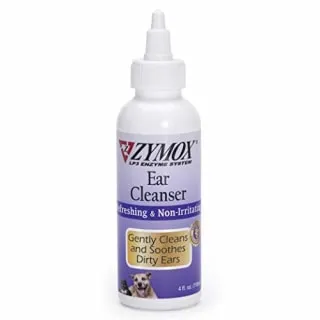 Zymox Ear Cleanser Solution with a blue label on a white bottle
Zymox Ear Cleanser Solution with a blue label on a white bottle
Dr. Gonzalez often uses and recommends this Zymox cleanser, noting consistently positive outcomes. Suitable for both dogs and cats, it’s formulated without harsh chemicals, making it gentle yet effective. The pointed nozzle simplifies application, and its fresh scent is a bonus. The brand claims this solution not only cleans but also helps alleviate itching, making it a comprehensive choice for routine ear care.
Vetnique Oticbliss Medicated Dog Ear Cleaner
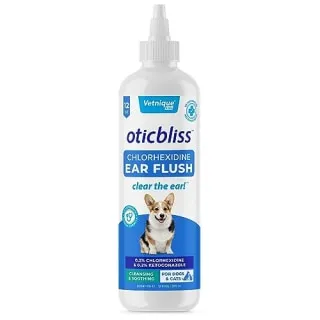 Vetnique Oticbliss Medicated Dog Ear Cleaner bottle with purple label and pointed applicator
Vetnique Oticbliss Medicated Dog Ear Cleaner bottle with purple label and pointed applicator
Recommended by Dr. Gonzalez, this medicated solution contains 1% ketoconazole and 2% chlorhexidine, ingredients known to combat and prevent ear infections, according to Vetnique. It also features aloe vera to soothe itchy ears and leaves a mild, pleasant scent. This makes it an excellent option for dogs prone to infections or those needing extra comfort for sensitive ears.
TrizEDTA TrizULTRA+Keto Flush for Dogs
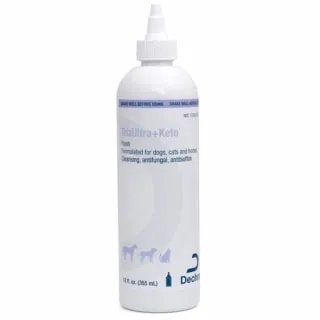 TrizEDTA TrizULTRA+Keto Flush for Dogs bottle, large and white with a blue label
TrizEDTA TrizULTRA+Keto Flush for Dogs bottle, large and white with a blue label
Another favorite of Dr. Gonzalez, who uses it for his own pets, this flush boasts antibacterial, antifungal, and antimicrobial properties. Its fragrance-free formula makes it particularly suitable for dogs with highly sensitive skin. Beyond dogs, this versatile solution can also be safely used for cats and horses, highlighting its gentle yet powerful formulation for various animal ear health needs.
Virbac Epi-Otic Advanced Ear Cleanser
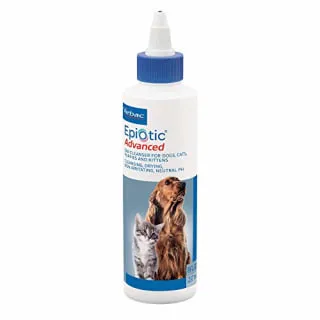 Virbac Epi-Otic Advanced Ear Cleanser in a white bottle with a green label
Virbac Epi-Otic Advanced Ear Cleanser in a white bottle with a green label
Dr. Bonk highly recommends the Virbac Epi-Otic Advanced Ear Cleanser, praising its effectiveness for both everyday cleaning and treating active ear infections. She highlights its widespread availability and safety for regular use. According to the brand, it performs exceptionally well for dogs with allergies, floppy ears, or those who frequently swim, providing a thorough clean. It features a light, fresh scent and is designed to be non-irritating. For dogs sensitive to heat, particularly after an active day, you might also consider a best cooling blanket for dogs to help them relax.
Veterinary Formula Clinical Care Ear Therapy
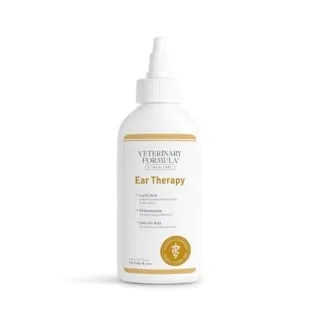 Veterinary Formula Clinical Care Ear Therapy in a blue and white bottle
Veterinary Formula Clinical Care Ear Therapy in a blue and white bottle
This particular solution comes with a powerful personal endorsement. My French Bulldog, Myko, struggled with frequent ear infections due to her numerous allergies. Our vet recommended weekly cleanings with this specific solution to prevent bacterial buildup. Since incorporating it into her routine, Myko has not had a single ear infection. The formula contains lactic acid and ketoconazole, which actively break down dirt and bacteria. Being alcohol-free, it’s ideal for sensitive skin and gentle enough for frequent use, ensuring consistent ear health. Protecting your dog’s comfort extends to their resting space, where a chew proof dog crate mat or chew proof dog crate pad can provide durability and peace of mind.
The Risks of Neglecting Your Dog’s Ear Health
Failing to clean your dog’s ears regularly can lead to significant health problems. Dr. Bernal stresses that consistent ear cleaning is vital, especially for dogs prone to ear issues, as it prevents the buildup of wax and debris. This accumulation creates a moist, dark environment that is conducive to the development of ear infections, specifically Otitis externa, which is inflammation of the external ear canal.
Dr. Gonzalez adds that insufficient cleaning can also lead to an overgrowth of yeast and bacteria, culminating in painful infections. Pet owners should be vigilant for signs of a possible infection, such as your dog pawing or scratching at their ears, a foul odor emanating from the ears, or any visible oozing. If you observe any of these symptoms, it’s crucial to seek veterinary attention promptly. Your vet can accurately diagnose the issue and prescribe a prescription-strength cleanser or medication to effectively treat the infection.
Conclusion
Maintaining your dog’s ear health is an indispensable part of responsible pet ownership, preventing discomfort and more serious conditions like infections. By following safe cleaning practices and choosing the best ear solution for dogs as recommended by veterinarians, you can significantly contribute to your furry friend’s well-being. Regular checks and timely intervention with appropriate products will ensure your dog’s ears remain clean, healthy, and free from irritation. Always consult your veterinarian for personalized advice on your dog’s specific ear care needs.
Expert Contributions & References
Our insights are informed by the valuable expertise of:
- Dr. Danielle Bernal: On-staff veterinarian at Wellness Pet Company.
- Dr. Chyrle Bonk: Veterinarian and contributor at Dogster.
- Dr. Abel Gonzalez: Veterinarian and clinical director with Dutch.com.
